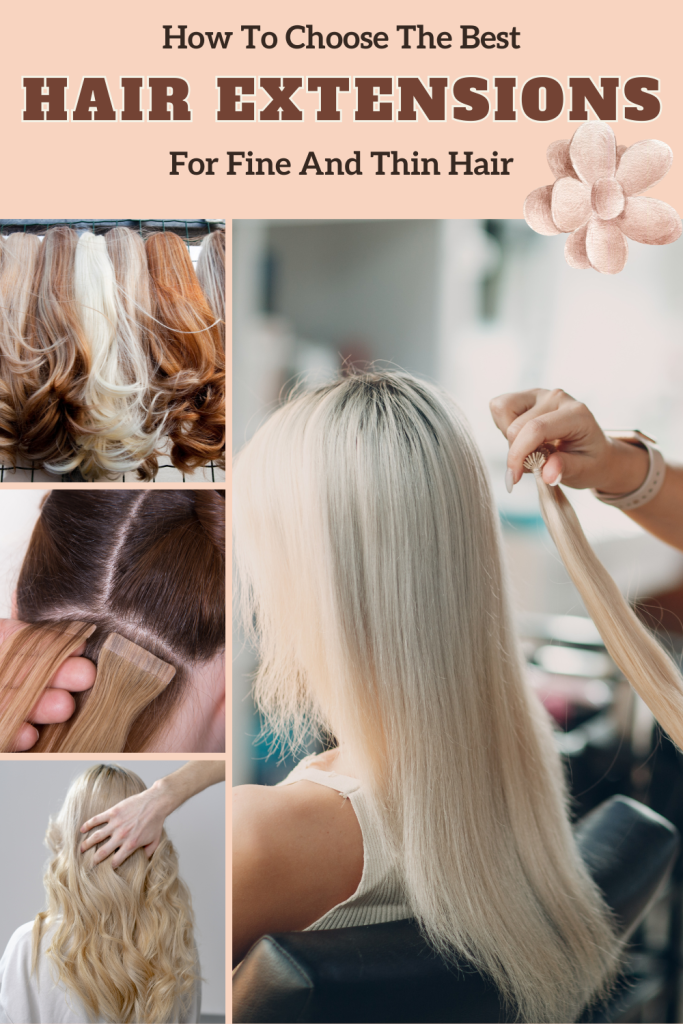In this post, we will talk about How To Choose The Best Hair Extensions for Fine And Thin Hair. Choosing the right hair extensions can make all the difference for those with fine, thin hair, offering volume and length without causing damage.
When selecting extensions, it’s important to consider the weight, attachment method, and quality to ensure they complement rather than overwhelm your natural hair.
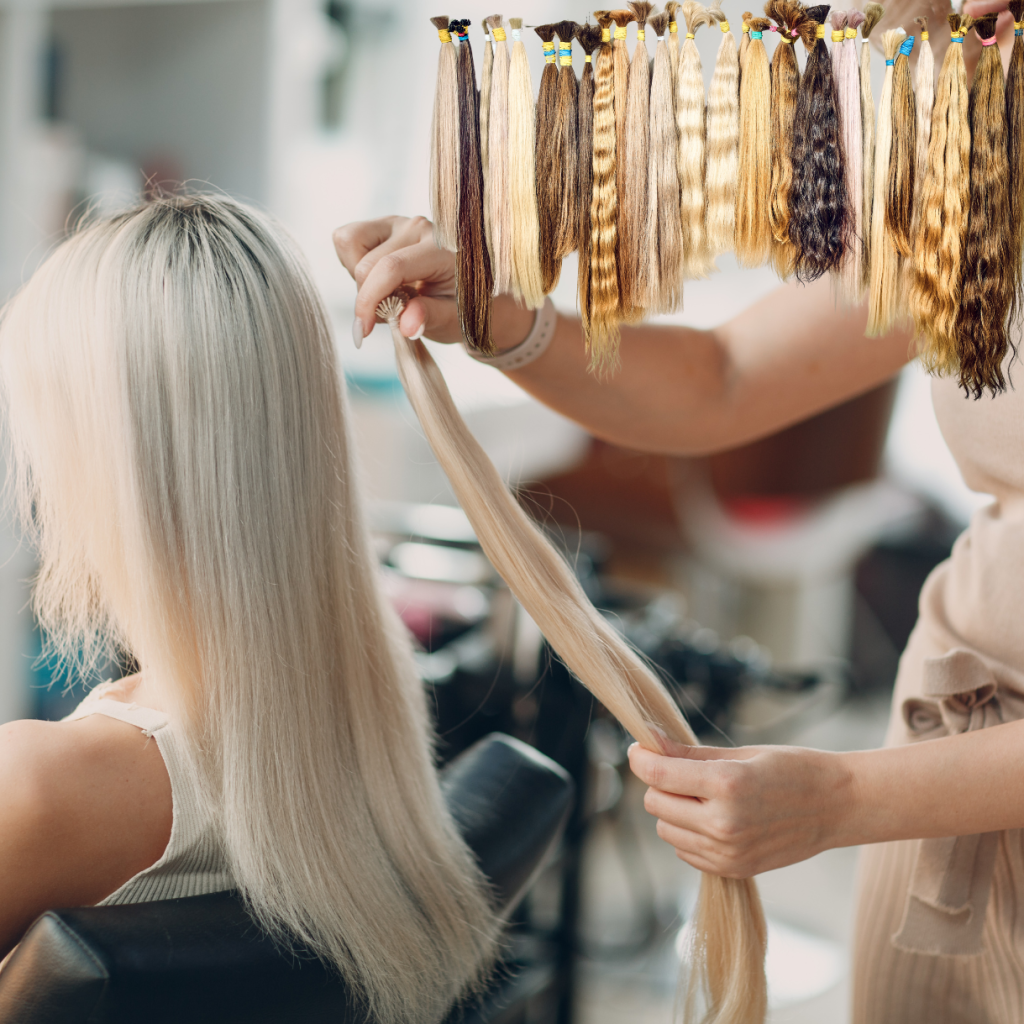
How To Choose The Best Hair Extensions for Fine And Thin Hair
The best hair extensions for fine and thin hair are specifically designed to be lightweight while providing natural-looking volume and are typically less dense than traditional extensions.
For individuals with fine or thin hair, certain extension types work better than others. Tape-ins and halo extensions often provide excellent results as they distribute weight evenly across the scalp.
This balanced weight distribution helps prevent stress on fragile strands, making them a reliable choice for everyday wear.
For example, seamless 18-inch hair extensions are a great option for those looking to add length without sacrificing comfort. These extensions blend effortlessly with fine hair, providing volume without creating bulk.
By choosing lightweight extensions with a smooth application, the natural texture of your hair is preserved, reducing the risk of damage.
Understanding your hair’s limitations and choosing extensions accordingly will help you achieve the look you desire without compromising hair health.
Quality matters significantly—opt for real human hair extensions when possible, as they blend more naturally with your own hair and can be styled using heat tools for a seamless finish.
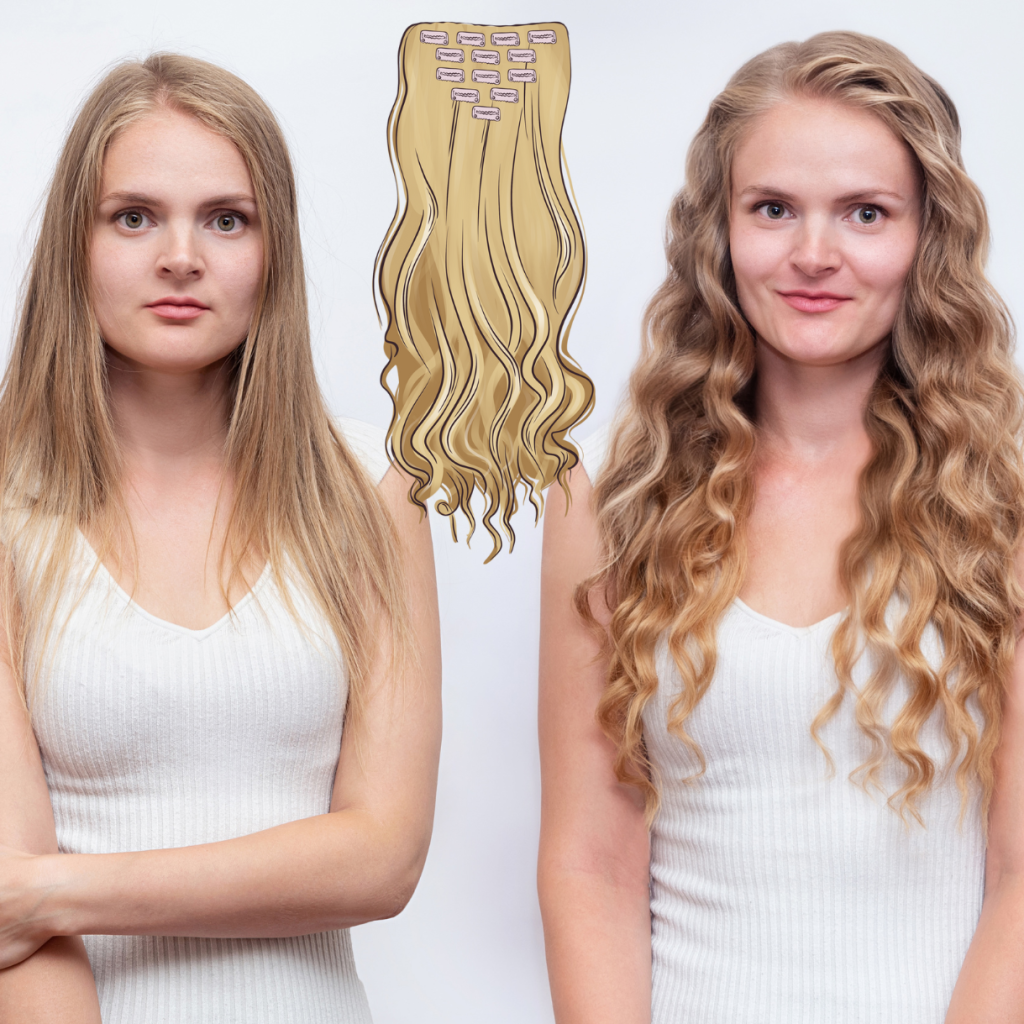
Things We Will Talk About:
- Lightweight extensions specifically designed for fine hair prevent damage while adding volume.
- Tape-in and halo extensions distribute weight evenly and are less likely to strain delicate hair.
- High-quality human hair extensions offer the most natural look and can be styled alongside your own hair.
Understanding Hair Extensions for Fine and Thin Hair
Choosing the right hair extensions for fine or thin hair requires understanding your hair’s unique characteristics and selecting products specifically designed for these hair types.
The weight, attachment method, and quality of extensions dramatically impact both appearance and hair health.
Assessing Hair Density and Texture
Hair density refers to how many strands of hair you have per square inch on your scalp. Fine-haired individuals may have normal or high density but thin strands, while those with thin hair typically have lower density.
To assess your density, pull your hair back and examine your scalp visibility. If your scalp is easily visible, you likely have low density. Medium density shows some scalp, while high density shows minimal scalp.
Hair texture describes the diameter of individual strands. Fine hair feels silky and may slip through fingers easily. A simple test involves taking a single strand between your fingers – if you barely feel it, your hair is fine.
Professional assessment by a hairstylist is recommended before investing in extensions, as they can accurately evaluate both density and texture parameters.
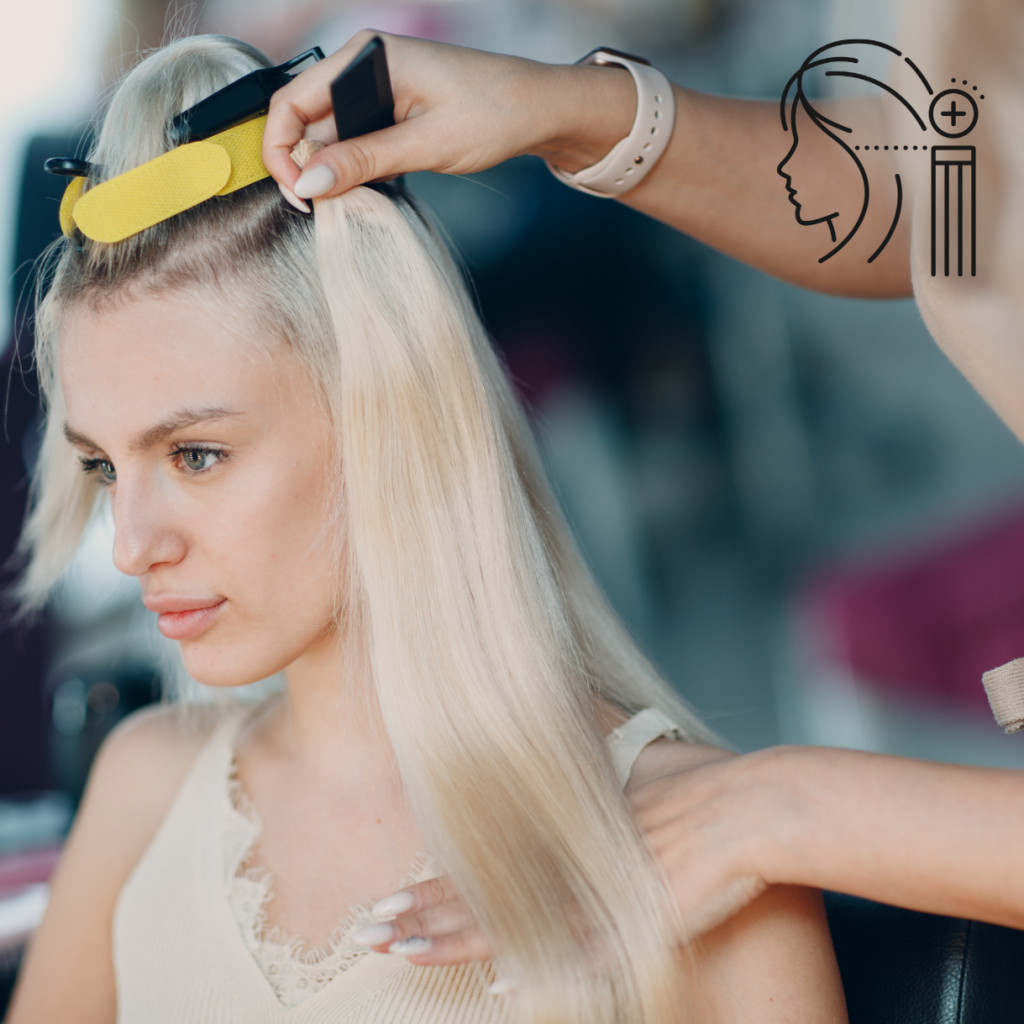
Differences between Fine and Thin Hair
Fine hair and thin hair, though often used interchangeably, represent distinct characteristics. Fine hair refers to the diameter of individual strands, which are smaller compared to medium or coarse hair. People with fine hair may have plenty of strands but each strand is delicate.
Thin hair, conversely, refers to low density or fewer strands per square inch on the scalp. Someone can have thin hair that’s actually coarse in texture, or fine hair that’s quite dense and full-looking.
Age, genetics, hormonal changes, and health conditions can contribute to thinning hair. Fine hair is primarily genetic and remains consistent throughout life unless affected by other factors.
This distinction matters when selecting extensions because different types address different concerns.
Fine hair needs lightweight options that won’t stress delicate strands, while thin hair requires extensions that create volume without being obvious.
Types of Hair Extensions Suitable for Fine Hair
Tape-in extensions rank among the best options for fine, thin hair. These ultra-thin wefts sandwich natural hair between adhesive strips, distributing weight evenly without creating strain. Their flat profile allows them to blend seamlessly with fine hair.
Clip-ins with smaller, lightweight clips work well for occasional use. Look for silicone-lined clips that grip without slipping in fine hair. Select extensions with fewer strands per weft to maintain a natural appearance.
Nano and micro-bead extensions offer another excellent solution. These tiny attachments secure small sections of extensions using minuscule beads, creating minimal tension while remaining virtually undetectable in fine hair.
Human Remy hair extensions provide the most natural result. “Remy” indicates all cuticles face the same direction, reducing tangling issues common with fine hair. Synthetic options, while more affordable, often appear bulkier and less natural with fine hair.
Avoid fusion/keratin bond extensions for very fine hair, as the adhesive weight can cause strain and damage delicate strands.
Selecting the Best Hair Extensions for Fine, Thin Hair
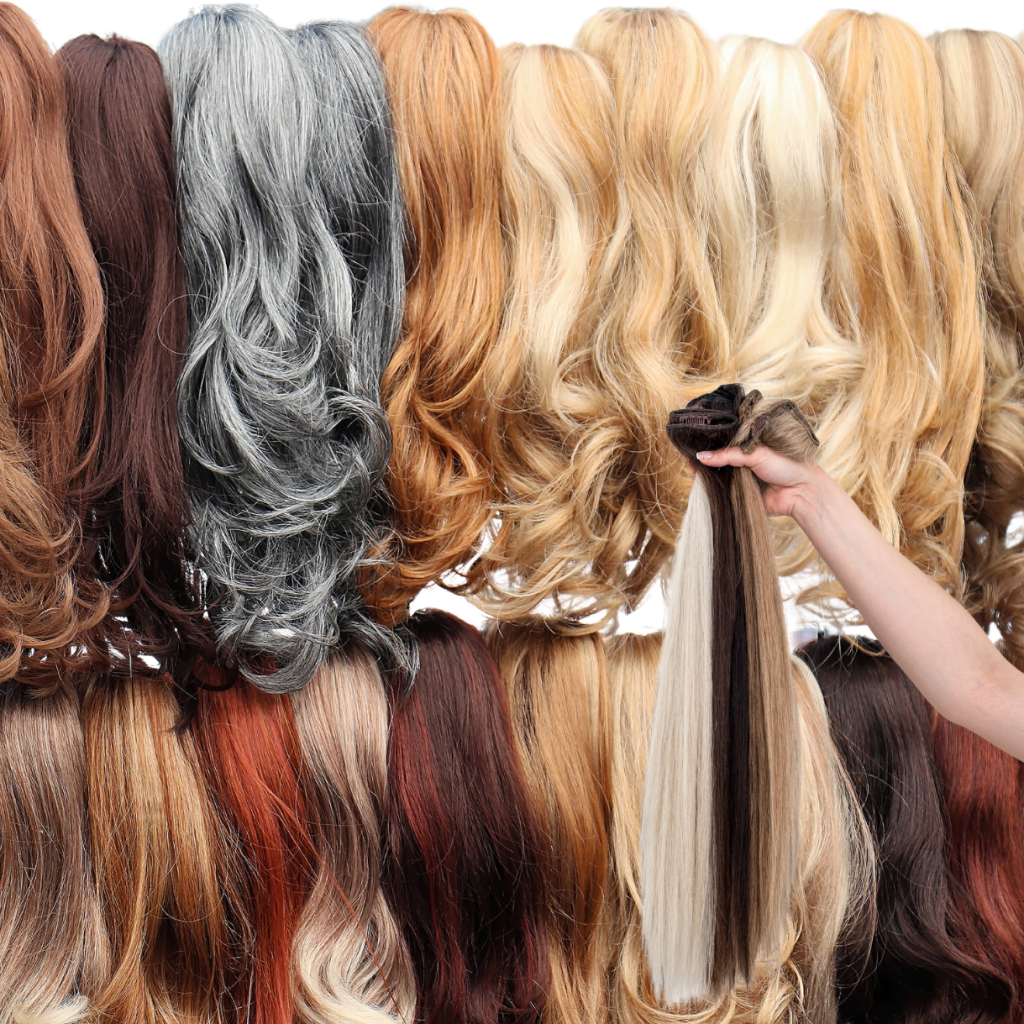
Finding the right hair extensions for fine or thin hair requires careful consideration of weight, attachment method, and hair quality.
The ideal extensions should blend seamlessly while adding volume without causing damage to your natural hair.
Criteria for Choosing Quality Hair Extensions
When selecting hair extensions for fine hair, weight should be your primary concern. Heavier extensions can pull on delicate hair follicles, potentially causing traction alopecia or further thinning over time.
Look for extensions specifically marketed for fine or thin hair, as these are designed to be lighter while still providing the desired volume and length.
The colour match is equally important—extensions should perfectly blend with your natural hair for an undetectable finish.
Density matters tremendously. For those with thin hair, choosing extensions with a graduated density (thinner at the top, fuller at the bottom) helps create a natural transition from your hair to the extensions.
The attachment points should be small and flat to remain hidden beneath fine hair. Many brands now offer specialized products with smaller, thinner wefts specifically designed for fine-haired individuals.
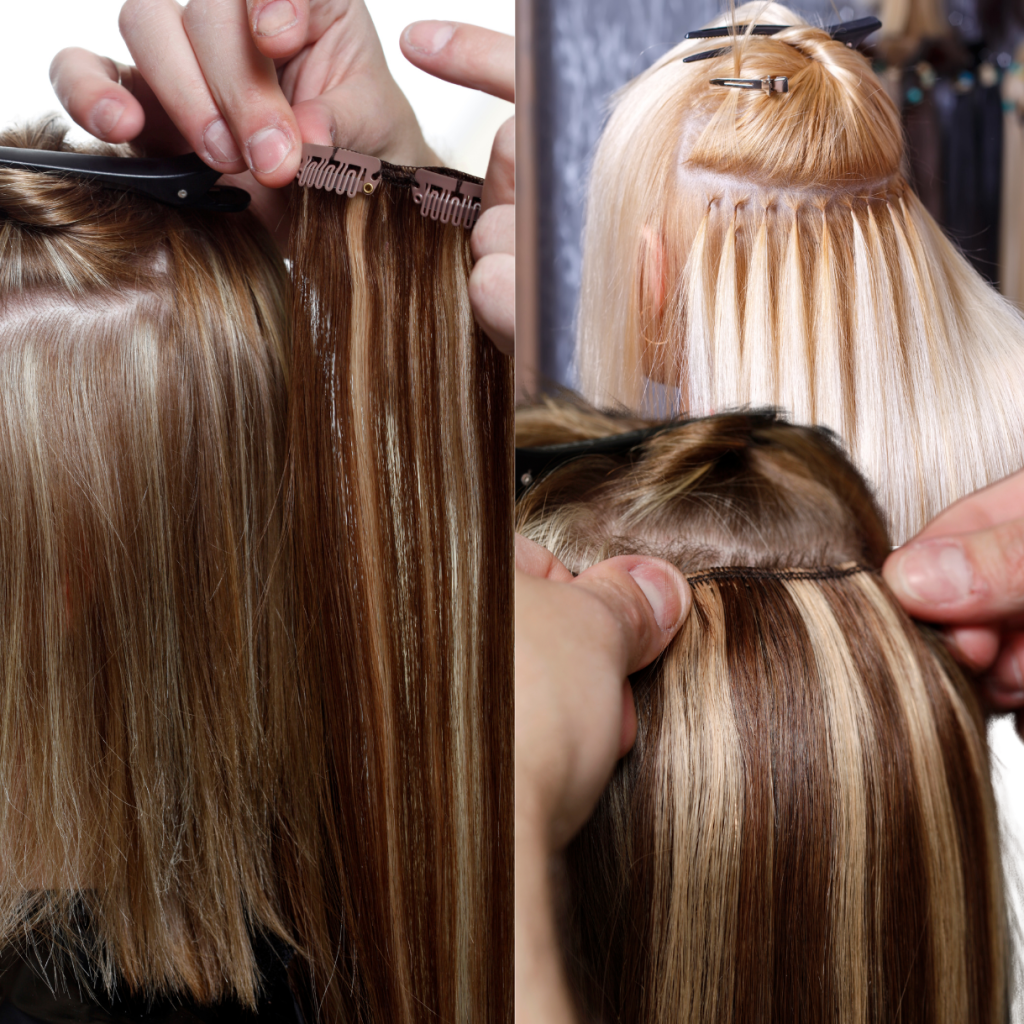
Clip-In versus Tape-In Extensions
Clip-in extensions are often recommended as the best option for those new to hair extensions or with particularly fine hair. They exert minimal constant tension since they’re only worn temporarily.
These extensions feature small pressure-sensitive clips that secure to your roots without requiring heat or adhesives. For extremely fine hair, seek clip-ins with smaller, lighter clips and fewer hairs per weft to prevent pulling.
Tape-in extensions provide a more semi-permanent solution, lasting 6-8 weeks before requiring repositioning.
These ultra-thin wefts are attached using medical-grade adhesive tape, distributing weight more evenly across the scalp than individual methods.
The flat profile of tape-ins makes them nearly undetectable in fine hair. However, professional application and removal are strongly recommended to prevent damage to delicate strands.
Considerations for Lightweight and Invisible Options
Invisible hair extensions represent cutting-edge technology for fine-haired individuals. These extensions feature ultra-thin wefts with reduced bulk at attachment points, making them practically undetectable even in the sparsest areas.
Weight distribution is crucial. Extensions with multiple smaller pieces allow for strategic placement, creating volume where needed without overwhelming your natural hair.
Many brands now offer specialized “fine hair” lines with 50-70% less weight than standard extensions.
Optimal hair extension weights for fine hair:
- Light: 70-90 grams
- Medium: 100-120 grams
- Maximum: 140 grams
Installation technique significantly impacts visibility. Extensions placed too close to the hairline or part can be difficult to conceal with fine hair. Professional application ensures proper placement for the most natural-looking results.
The Importance of Remy Human Hair
Remy human hair extensions represent the highest quality option for those with fine hair. “Remy” indicates all cuticles face the same direction, preventing tangling and maintaining a natural appearance.
Unlike synthetic alternatives, Remy hair can be heat-styled to match your natural texture. This versatility is essential for creating a seamless blend between extensions and fine hair that might have unique wave patterns or movement.
The quality of Remy hair extensions varies significantly. Virgin Remy (hair never chemically processed) offers the most natural look and longest lifespan, though at a higher price point.
For fine hair, single-drawn Remy extensions (where hair is roughly the same length) tend to work better than double-drawn varieties (where shorter hairs are removed), as they create a more natural taper at the ends rather than a blunt, potentially unnatural appearance.
Selecting the right hair extensions for fine, thin hair requires careful consideration of hair type and application method.
Remy human hair extensions typically offer the most natural results with minimal shedding and tangling for those with delicate strands.
The ideal extensions should complement your hair’s texture while providing the desired volume without causing damage. Proper weight and density selection prevents stress on natural hair follicles.
With the correct extensions and proper maintenance, those with fine hair can enjoy added length and volume while maintaining hair health.
Regular consultations with a hair professional can ensure your extensions continue to look natural and feel comfortable.
Remember that the best extensions aren’t merely an accessory but an investment in your appearance and confidence.
PIN IT!
